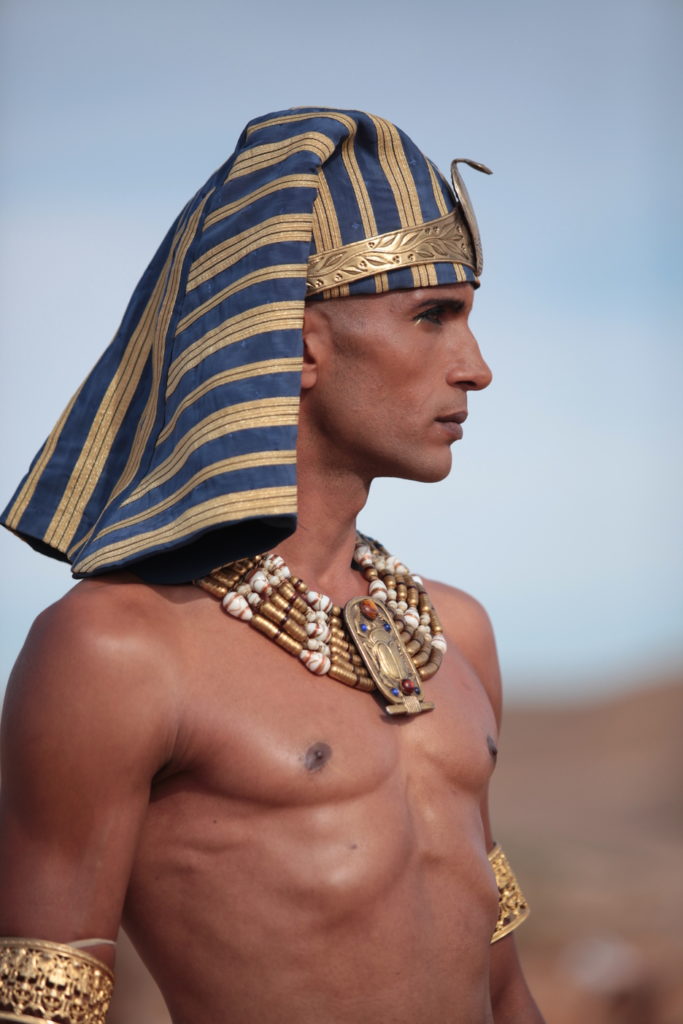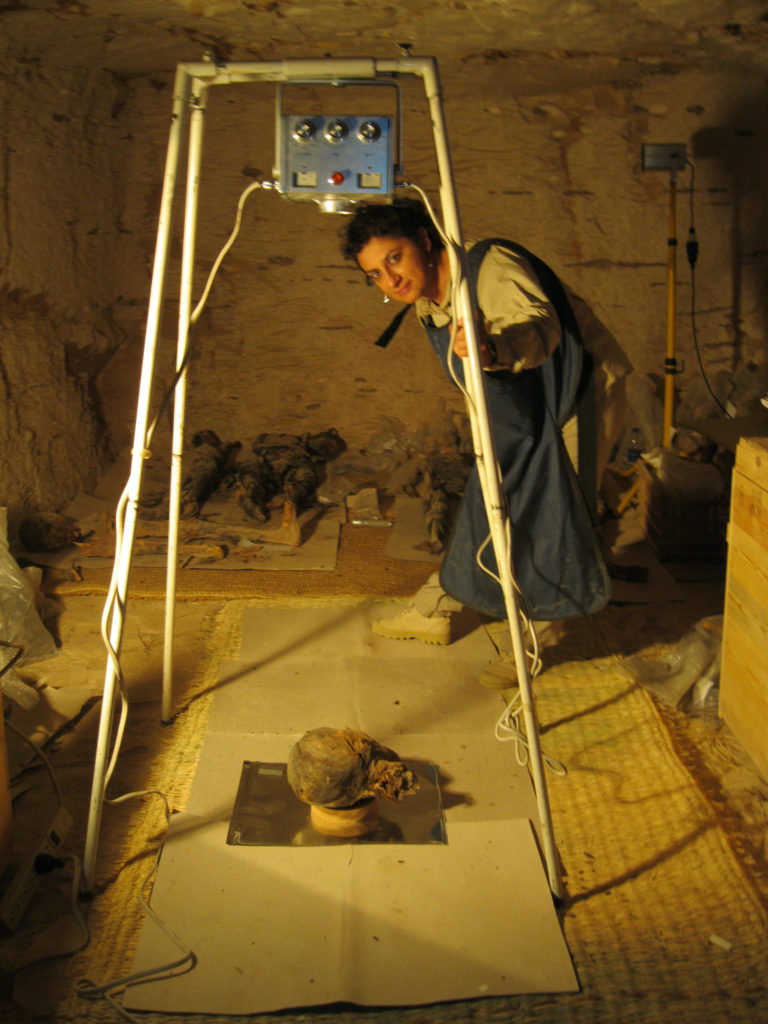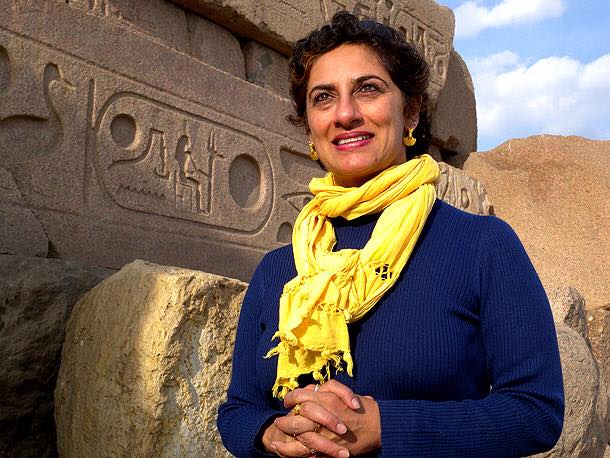What drew you to Ancient Egypt?
On my eighth birthday my parents gave me the Time Life book on ancient Egypt. From then I was fascinated by the Egyptians — they replaced the Minoans in my affections. When I was nine I visited Cairo with my family and fell in love with the Grand Gallery of the Great Pyramid. Then, we visited the Cairo Museum, where I saw Rahotep and Nofret’s statue: I turned around and thought they were real. I decided that I had found ‘my’ people and decided to become an Egyptologist.
I also ‘met’ Tutankhamun then, and of course, was intrigued by the fact that he was nine-and-a-half when he became king, and I suppose I just thought of him as another nine-and-a-half year old, like me and rather forgot that he grew up as a king. But it forged a bond between us (rather one-sidedly!).
What do we owe most to the ancient Egyptians?
We owe all kinds of things to the ancient Egyptians. An understanding of astronomy, medicine, proportions, some aspects of mathematics, and of course their legacy of extraordinary buildings that were wonders of the ancient world and continue to be wonders in the modern world.
Is there one individual you admire most from this period?
It is hard to focus on a single individual. I think one of the people who must’ve been quite extraordinary was Imhotep, the architect who designed the step pyramid [at Saqqara], and its complex. This was the first monumental stone building (and complex) known to humankind. If what we think we know about Imhotep is correct, he also was a medical doctor in addition to being an architect and an engineer. Another person I think it would have been marvellous to meet, would have been [second millennium BC pharaoh] Hatshepsut, as she is a truly remarkable woman.

Did the building projects of the pharaohs spawn new technologies?
We don’t know to what extent each building project spawned new technologies. Certainly with each new form of building or monument, such as a large obelisk, new technologies and new ways of solving problems must have been invented. Thus, they discovered how to extract massive pieces of stone in one single piece and modes of transportation so that rivercraft were sturdy enough to transport several tons of stone up and down the Nile. The erection of the pyramids, as well as many of the temples, was only possible because they were able to use ramps, rollers, and crude pulleys.
We see the analysis of pollen in Legends of The Pharaohs as a way to determine the harvests of the time — What other new techniques and tools are we using to help unearth the mysteries of the past?
There are all kinds of new technologies and tools that we are using. For example: There have been huge improvements in carbon-14 dating using accelerator mass spectrometry (AMS), we have second generation DNA sequencing and the kind of imaging we use for examining mummies, as well as artefacts of all varieties, is also changing the way we interact with these things, how we study them and how we conserve them. Isotopes help establish origins of humans and animals, and thus explain trade networks and migration. 3D imaging is also a useful tool in aiding conservation and preservation.

Legends of the Pharaohs references climate, sea level change and less desertification. How different was Ancient Egypt to the land we know today?
This depends on the particular time period we are talking about. In 7,000 BC it is probable that there were herds of elephants roaming the area, more trees throughout, greenery in what is now the deep Sahara. Rhinos, antelopes of all types, wild cattle and donkeys, hyenae, foxes, and giraffes would have been common, together with lions and leopards. There were many more water sources in what are now the Eastern and Western deserts. The Nile floods would have been prodigious. By 3000 BC there was an increase in acidification, and then just before/around about 2000 BC, there was more climate change that impacted Egypt dramatically, leading to the collapse of the Old Kingdom.
What are the big mysteries this new series unveils?
It just depends on how much one knows — it could all be a mystery to some. I imagine the ideas of climate change causing the collapse of the Old Kingdom is one such ‘mystery’, as well as some of the intrigues that brought about the downfalls of different kings.
Ancient Egypt has been studied extensively, why does it continue to fascinate us and what new history are we discovering?
Although people have been studying ancient Egypt for well over 200 years, in terms of serious study, it continues to grip popular imagination because the ancient Egyptians built enormous monuments, mummified their dead, and seem to have had sources for hidden secret mysterious knowledge that helped shape esoteric beliefs in the ensuing millennia.
As we dig at more sites and uncover more archaeological remains as well as new text and translations, we learn more and more about Egyptian history. Using the increasing number of scientific tools at our disposal we can better understand what happened in the past, not just in terms of humans and what they have left behind, but how they adapted to changes in their environment — whether it is an increase in desertification or high or low Niles — and the kind of impact this had on the flora and fauna upon which they depended for their livelihoods.

How important is the site of Saqqara?
Saqqara is one of the most important cemeteries in Egypt. It was active for more than 3000 years. It served the capital city of Memphis for millennia. It also went beyond being a cemetery; it was the site for many temples, whether they were for kings or for the pantheon of gods, including, in the later periods of Egyptian history, animal cults. In addition, mummification workshops, workshops for funerary furniture and other items, as well as dwellings for the priests were located at the site. In the Christian period there was a large monastery located here, so even when the religion changed, Saqqara retained its significance in the religious life of the Egyptians.
Is it true there are more pyramids in Sudan than in Egypt?
There are about 200 pyramids in Sudan and about 85 in Egypt. The Egyptian ones though are associated with royalty. If we start counting the smaller pyramids in Egypt that were made for elite individuals, then I think it would easily eclipse Sudan’s pyramid count.
Are these older and what is the relation (if any) to the Great Pyramids of the pharaohs?
All of the Sudanese pyramids are much much later than those of the pharaohs. The Sudanese ones are all inspired/derived from the Egyptian ones
Do we know why there was such widespread looting of the Pyramids and ancient tombs during the ancient era?
People were poor and they wanted wealth — or they were moderately poor and wanted more wealth.

Was the organisation it took to build the pyramids unprecedented at the time? What was the legacy of this kind of mobilisation and was it only seen in pyramid building?
Yes, it was unprecedented in the ancient world. The Egyptians had a well-oiled bureaucratic machine, manpower, technological knowledge, wealth, and imagination, all of which made it possible for them to build the pyramids.
A strong bureaucracy, and an ability to organise thousands of people, to feed, clothe, house, and pay them, and get them to work together. All this was later diverted from pyramid building to cutting canals, constructing dams, harbours, and erecting temples.
You’ve worked on an animal mummy project and written a book on the subject — could you tell us a little about this and why Ancient Egyptians wanted to mummify animals?
Animal mummies are fascinating, as they seem such a curiosity to us today. They tell us a lot about how the ancient Egyptians thought of animals, and the complex way in which they viewed the world.
There are several different types of animal mummies. Pets were beloved and they were preserved so that the souls of the animals and their owners could be united for eternity.
But animals also provided food, and thus food mummies were made to nourish the dead forever.
Certain specially marked animals were also regarded as sacred beings, manifestations of gods on earth. Animals were thought to have a unique position in the realm of the gods and each god had a totemic animal. In some cases, the god’s spirit would enter into one of his/her totemic animals, recognisable to the priests by special markings. The animal would be worshipped and cared for during its lifetime and after its death it would be mummified and buried with great pomp in special tombs. The god’s spirit would move to the body of another uniquely marked creature, a bit like the migratory spirit of the Dalai Lama.
Animal mummies were also given as votive offerings to the gods, but of course these would be animals that bore no special markings. These were sometimes killed deliberately and given as mummies by pilgrims, taking their prayers to the gods. Curiously many of the animals mummified for this purpose were killed deliberately. Perhaps the priests felt that these animals had been especially blessed as they had been chosen as messengers to the gods.
Animal cults provided people with a more intimate relationship with the gods, and votive offerings of animal mummies might have been seen as a more powerful way of interacting with the gods. These mummies also played a significant role in the economy as this practice involved temple personnel to look after the animals, to obtain them, to mummify them, and other people might have sourced animals as well. Additionally, natron, resins, oils, and bandages had to be obtained, as well as pottery vessels and coffins for the creatures. Thus, a network of trade with huge economic ramifications depended on this practice.

Modern social, political and scientific phenomena such as fake news, propaganda and the covid pandemic feel new and jarring but did similar events take place in Ancient Egypt? How did people deal with these events?
Fake news was probably something that has existed throughout human history. Sometimes it has been given out by the ruler, and sometimes by people in power or people who want to get rid of those who are in power. Propaganda is one of the oldest tools in history and was used by rulers as well as by religious leaders. Thus, much of what we now see its propaganda was probably in a large part invented by the ancient Egyptians: images of their leader being heroic, saving the country, being the best, strongest, and most powerful being, who would protect Egypt…
Pandemics also occurred — the Egyptians suffered from plague and had a harder time then than we do now, given that medical knowledge was so limited. However, they prayed to the gods, made offerings, burnt incense to purify the air, and tried to keep themselves clean in order to survive.
Given that we still talk about and witness the pharaoh’s and their monuments, have they achieved the immortality they craved in life?
To a large extent many pharaohs have achieved immortality…as we remember them and say their names they continue (according to their beliefs) to thrive in the afterlife and are remembered in this one.
What should we look forward to in the field of Egyptology?
There are potentially many more things to find out about the Ancient Egyptians. Some of these might be revealed through excavations, others through translations of texts, and still more through the application of different scientific techniques on artefacts or the study of the environment.
Legends of the Pharaohs premieres on Monday 4th January 2021 on Sky History, the first in a six part series, all episodes available on catch up services too.

